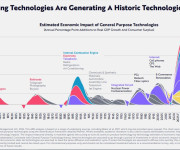PostgreSQL-The Other big open-source database has a new release

While it’s not as well known as MySQL and MariaDB, PostgreSQL has its share of major users. These include Etsy, IMDB, and Creative Commons. In other words, PostgreSQL can handle millions of users and petabytes of data with the best of the enterprise DBMSs.
In addition, PostgreSQL has started getting developer support from companies such as EnterpriseDB and Salesforce.com.
This latest release expands PostgreSQL’s reliability, availability, and ability to integrate with other databases. According to the PostgreSQL Global Development Group, which oversees the DBMS’s progress, “Users are already finding that they can build applications using version 9.3 which would not have been possible before.”
Developers agree. Jonathan S. Katz, CTO of VenueBook, an event-planning company, said in a statement, “PostgreSQL 9.3 provides features that as an app developer I can use immediately: better JSON (JavaScript Object Notation) functionality, regular expression indexing, and easily federating databases with the PostgreSQL foreign data wrapper. I have no idea how I completed projects without 9.3.” Pascal Bouchareine, director of research and development at Gandi.net, a Web-hosting company, added, “Postgres has been my favorite choice for its well known stability, robustness, strong coherency, safety, ACID, and SQL conformance.”
This new edition comes with the ability, thanks to PostgreSQL’s Foreign Data Wrappers, for two-way data interchange between multiple databases and semi-structured data sources. PostgreSQL helps you integrate them into a coherent stack.
This release also includes features to further improve and extend PostgreSQL’s reliability and availability. These include:
Data Page Checksums: help administrators quickly detect failing disks and bad hardware that corrupts data.
Fast Failover: enables sub-second switch-offs from master to replica, supporting “carrier-grade” availability.
Streaming-Only Remastering: easier, faster reconfiguration of cascading replicas after failover.
For developers, PostgreSQL’s new features include:
- Additional JSON constructor and extractor methods
- Automatically updatable VIEWs
- Parallel page_dump to speed backups of large databases
- LATERAL JOINs
In addition, PostgreSQL 9.3’s User-Defined Background Workers enable developers to write task managers, request handlers, parallel processors, queuing tools and other helper applications to enable PostgreSQL as a work-flow coordinator. For example, Mongres is a background worker which accepts the NoSQL MongoDB queries, interprets them and passes them on to PostgreSQL.
Want to know more? You can download PostgresSQL 9.3 today and check it out for yourself.
By Steven J. Vaughan-Nichols Source

























